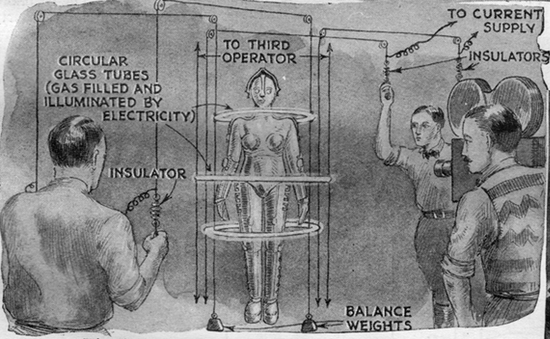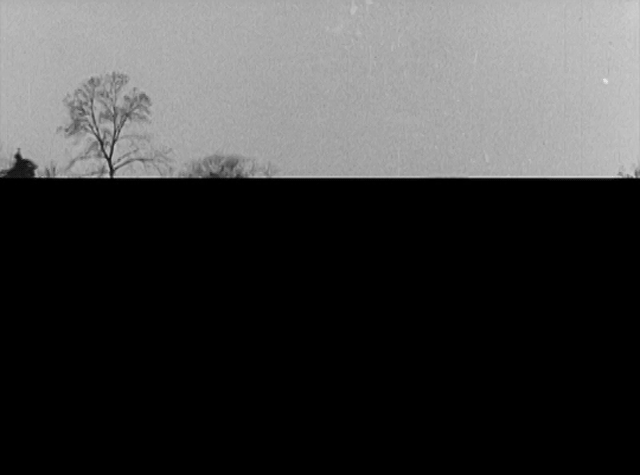The early days of cinema were days of experimentation. As audiences grew to appreciate what the medium was capable of, those pioneering movie magic were compelled to find more daring and creative ways to wow their viewers.
In many cases, the visual impact of these special effects have dated. What hasn’t dated, however, is the sense of respect and inspiration they inspire. Modern visual effects may have made the process simpler and safer, but there’s no denying that a special innovative something is missing in the days of CGI.
Thanks to SilentMovieGIFs over on Twitter for the clips.
Modern Times (1936)
Chaplin’s iconic Tramp character was a bumbling, energetic figure who would often find himself in precarious positions…whether he realised it or not. Modern Times (notably, the film in which Chaplin retired the Tramp) features many such scenarios, few of which are quite so memorable as when he almost topples several stories down from a fenceless balcony at the department store where he works as a night watchman.
How Did They Do It?
Here is a classic case of glass matte paintings. By positioning the camera behind glass to force the perspective, Chaplin is able to focus on his performance without concern of harm. It’s simple, and holds up exceptionally well.
Ella Cinders (1926)
This creepy shot comes from Ella Cinders, a comedic adaptation of a comic itself based on Cinderella. Though the film is mostly forgotten now, it helped star Colleen Moore become one of the most famous stars of the era.
How Did They Do It?
Where Modern Times used mattes to add to the frame, Ella Cinders used them to isolate sections which were then pieced together to create a seamless image. Of course, that’s easier said then done. The effect required both Moore, the book, and the camera to remain completely still between setups.
Metropolis (1927)
The defining sci-fi of the silent era (at least stylistically), Fritz Lang’s masterpiece Metropolis was responsible for some notable special effects. Not the least of them was the electrical wonderment in the scene in which a robotic version of the revolutionary Maria comes to life. The effect has a notably computer generated feel to it, but it was entirely practical.
How Did They Do It?
Effects operators manually pulled the rings, filled with gas and illuminated by electricity, with daunting accuracy. Some frames were exposed up to 30 times, so even the slightest change would ruin the effect. No wonder the team involved rehearsed the sequence for weeks before production commenced.
Safety Last! (1923)
In the early 1920s, it simply wasn’t feasible to create a rear projection of such scale behind Harold Lloyd as he scales a skyscraper in a desperate showing of love, nor did safety equipment exist that would allow him to work at significant height. The only option resulted in one of the most clever effects on this list.
How Did They Do It?
A simple facade was built and placed on strategic buildings surrounding the actual skyscraper so that the background remained consistent. As Lloyd climbed higher, the crew moved to larger buildings. If he fell, he would land upon a mattress.
As I said, safety gear wasn’t really a thing for filmmakers in 1923.
Sherlock Jr. (1924)
Speaking of a lack of safety equipment…
Buster Keaton was renowned for performing his own stunts, regardless of the risk. Safety protocol was reportedly rudimentary on a Keaton set, resulting in occasional injuries (including a broken neck). So, in Sherlock Jr., it seems entirely plausible that Keaton would drive a motorcycle across a broken bridge, risking death if the vans did not align underneath at exactly the right time. But did he?
The answer is both yes and no. In the first shot, Keaton drove over the bridge before it was broken, while a matte obscured everything but his path. A piece of the bridge was then removed, and the vans coordinated to drive through at exactly the right time.
As for the shot in which Keaton crosses the last part of the bridge as it collapses: that is an entirely real stunt.
Ben-Hur (1925)
When he saw that a scene in Ben-Hur called for Jesus to heal a pair of lepers, acclaimed cinematographer Karl Struss worked to discover a way he could create the effect without the need to cut away. It was a big ask; after all, how do you make makeup disappear from an actor’s face?
How Did They Do It?
There’s no way to make makeup disappear, but Struss understood the limits of his camera, and used that knowledge to turn a flaw into a benefit. By using a blue-red colour filter, Struss creates a natural contrast change which blends the dark makeup with the actor’s skin tone, while simultaneously brightening other elements of the frame to extend the miraculous context of the scene.
Six years later, he would reverse the filter to create the transformation effect in Dr Jekyll and Mr Hyde.


